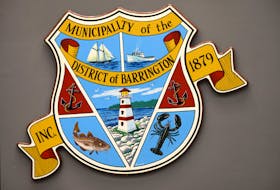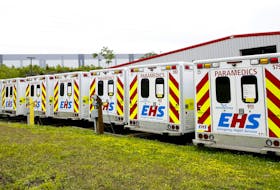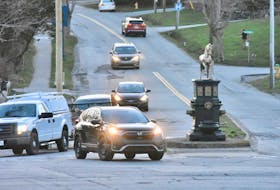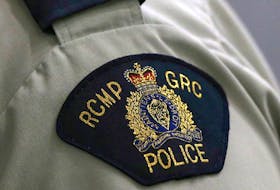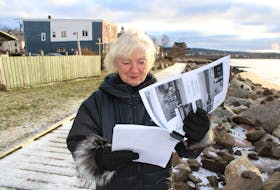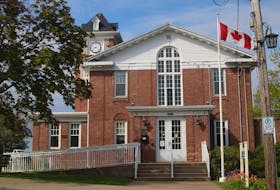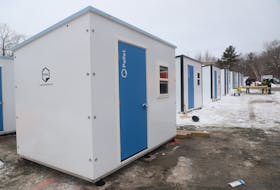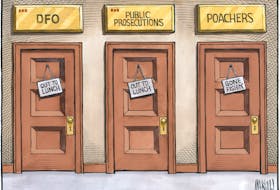PORT LA TOUR, N.S. — For the third consecutive year, history is being unearthed at the Fort St. Louis national historic site in Port LaTour by archaeologists, students, volunteers and community members.
“Every year we come here we learn so much more,” said project lead Dr. Katie Cottreau-Robins, curator of archaeology for the Nova Scotia Department of Communities, Culture and Heritage, in an interview.
The site of an early 17th century French fort, Dr. Cottreau-Robins said they have also been finding Basque material at Fort St. Louis, which points to an even earlier time in history than the French, “so now we’re trying to figure out what were the Basque doing here and trying to determine were the Basque here and overlapped with the French or were the Basque here, and this place was quiet for a while and then the French came, so those are our two main questions this year. We’re trying to find more evidence of the Basque presence and how that connects to the French… we’re planning to get a good understanding of the larger landscape.”
Dr. Cottreau-Robins said there is “no question” Fort St. Louis is one of the best archaeological sites she’s ever dug.
“There’s a 17th century landscape here that is essentially undisturbed and then we’re layering in these other periods of history … we can see multiple identities. There’s the French, the Basque, the Mi’kmaq and then we pick up a little bit of 18th century English artifacts and we’re thinking about the Acadian period in the 18th century and what was here. There is layered history on this site. It’s so rich in artifacts and architectural evidence, so just like the previous years we’re find lots. It’s awesome,” Add to that the support and excitement of the landowners and the community, “its amazing,” she said.
The archaeological dig is being conducted during the month of July. During the second week, the public were invited to take part, the same as last year.
“We had over 50 shifts last week for the public dig,” said Dr. Cottreau-Robins. “Some were repeat customers from last summer but we also had some new people and a couple of young kids. They had a great time, moved a lot of dirt, but were finding artifacts all the time which makes it really interesting when you are learning about archaeology and learning about the site.”
The Cape Sable Historical Society is also continuing to be a community partner in the project. In addition to the Fort St. Louis exhibit on display at the Barrington Museum Complex, an artifact cleaning lab has been set up this year that the public can visit. Both are located at the Old Court House building in Barrington.
Lidar data collection was also happening at the Fort St. Louis site this year, and geophysics testing conducted on a nearby property “where locals have told us” that Charles de la Tour built his father Claude de la Tour’s house. “We have the permission from the land owner to do some geophysics which is ground penetrating radar,” said Dr. Cottreau-Robins. “We don’t open up any soil,” rather walk the device across the land and “it produces maps that shows where possible buried structures may be.”
Dr. Cottreau-Robins estimates at least 5,000 artifacts have been unearthed so far from Fort. St. Louis. Additional funding for scientific analysis included in this year’s project grant will “help us understand” better the history of the area, she said.
Dr. Cottreau-Robins said she is planning to hold a public afternoon information session sometime this fall in Barrington where people can come in and see what was found this year. She is also planning to create a virtual exhibit for the Nova Scotia Museum website that will “highlight half a dozen really important artifacts and tell their full story and set the historical context for this place.”
Dr. Cottreau-Robins said she also intends to publish an article about the findings at Fort St. Louis so far. “There’s so much here to study” and sharing the findings is “key.”
As for a dig next year, "I’ll probably take a year off,” she said. “We have so much material now I need to sit and go through but then I want to come back and target some areas. Quite a bit of excitement has been generated about the whole project. Its been very positive so why not and the local community really wants us to keep going with it so why wouldn’t we? We’ve got the support.”
'Layered history’ being unearthed at Fort St. Louis by archaeology team
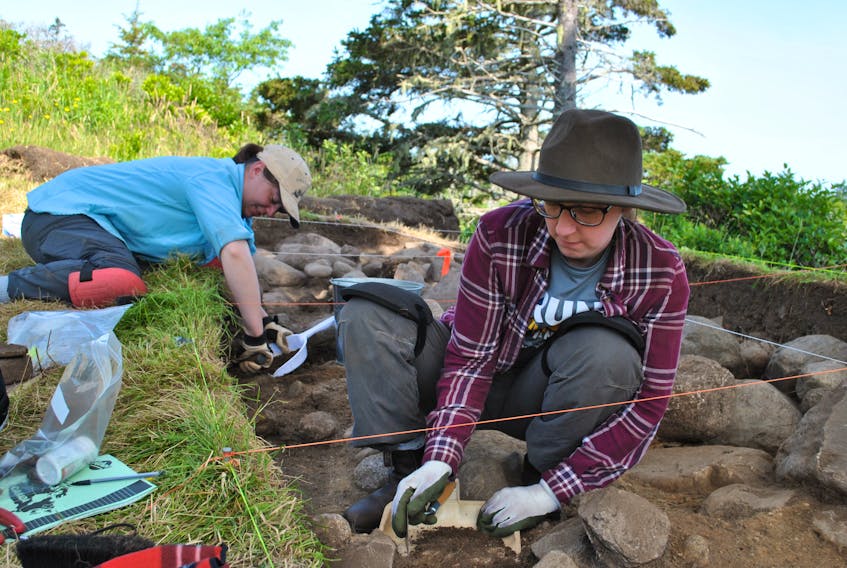
STORY CONTINUES BELOW THESE SALTWIRE VIDEOS

